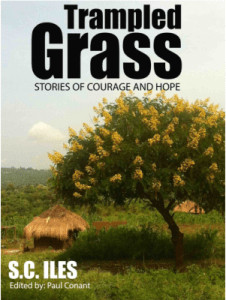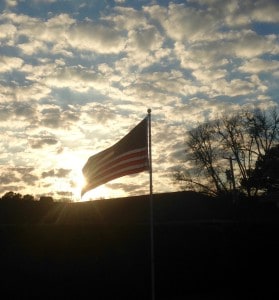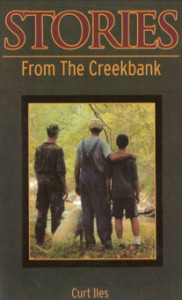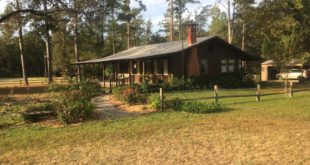That Flag


No matter where I see it, my heart still jumps.
It’s our flag.
The American flag.
You cannot truly appreciate this flag until you’ve been away from it.
During our three years in Africa, I would sometimes endure the long lines and intense security at our U.S. Embassy in Kampala, Uganda. But it was always worth the wait to see that flag flapping in the breeze.
I’m thankful for our freedom.
Here’s one of a million reasons why: we have the freedom to disagree.
I have a friend in Dry Creek. For eight years he has displayed a banner calling for the impeachment of our president.
To my knowledge, no federal agency has arrested, or questioned, him.
That is America.
In Uganda, South Sudan, Kenya, and most countries of the world, a protest sign like that wouldn’t last a day and the displayer would be in jail.
In spite of imperfections as a country, men and women have died to protect that freedom of dissent.
My Dry Creek friend is one of those veterans who served proudly under that flag.
Long may if wave.
Here’s a similar story from our book, Hearts across the Water.
Long may it Wave
In my mind I will always remember it as the enduring symbol of the United States—an American flag in a faraway place where you never expected to see one.
I thought about that flag today on the fourth anniversary of 9/11. The television news balanced a full day of the aftermath of Hurricane Katrina mixed with remembrance of another terrible September time of uncertainty four years ago. Over and over we saw the pictures of the flag atop the rubble of the World Trade Center.
But the American flag carried in the mind of our tsunami relief team is one we saw 12,000 miles from home in the middle of a disaster-strewn field along the north coast of Sumatra.
If you’ve ever spent time out of our country, you are aware that there are things you miss: a good hamburger, baseball box scores, and fried catfish. In past visits to the communist countries of Vietnam and China, there is a constant awareness that you are in a foreign country. Knowing you will not see an American flag is a fact of life.
The northernmost Indonesian island of Sumatra is a hotbed of Islamic fundamentalism. This group, called “the Free Aceh movement” has waged civil war against the reigning government for the last decade. This area, populated by the Achenese peoples, is under martial law. Because of the strong Sunni Muslim population and an Al Queda influence, Americans have not been welcome there for years. Until after December 26, when this part of the country was swept over by the tsunami wave,
as aid agencies and relief groups arrived, many included Westerners, especially Americans. Suddenly native Achenese, who only knew of the United States from television and the words of their imams, met Americans for the first time. Eighty days after the tsunami our eight-member team was among those westerners.
The first stop of our medical team upon landing in Banda Aceh was at a large open field covered with fresh red dirt. The field was probably the size of two football fields. Workmen were building a stone wall on one end. People stood quietly and reverently along the roadside looking across the wide field.
We knew this spot must mean something special. There was a feeling in my stomach of knowing what it was. Our Indonesian host walked up and explained that this was the burial spot of 20,000 residents of this city who had died in the tsunami. They had been buried in a large mass grave.
No funerals.
No goodbyes.
No closure for the ones left behind.
As we stood there silently taking in this surreal view, an older Indonesian man approached us. In halting English he asked, “Where are you from?”
“We are …. from America.”
With a small nod and bow he said, “Thank you for coming to help my people.”
We all quickly fell in love with the Achenese people. They were easy to love and we found that a smile, even an American smile, opened both doors and hearts.
However, we never forgot that the Indonesian people were not crazy about America. There were so many misperceptions and stereotypes (just like we have of them.) In the capital of Jakarta, our hosts pointed out the heavily fortified U.S. Embassy. There were concrete barricades, sandbagged bunkers, and high, barbed-wire-topped walls. This was mute testimony to how our America was perceived by this country.
Later as we reached our aid area, one thousand miles from the protected embassy, we found an open and positive reception. Of course we were benefiting from nearly three months of good deeds by preceding Americans.
One day on a trip to a remote displaced person’s camp (“DPC”) along the north coast, we saw a sight that caught all of our attention. In an area that was completely devastated for as far as you could see, a lone American flag waved from a homemade flagpole. It was beside a humble hut that had been constructed from timbers and materials left over from the tsunami.
The sight of our American flag in a foreign place touched us all. We all showed varying degrees of emotion—some crying, others smiling, others touched by something so familiar and loved in such a foreign and surprising place.
On the second day along this road, we pulled our vehicles to the roadside and went to the hut with the American flag. Carefully we picked our way through the debris and still-standing water. There was an omnipresent smell of decay, death, and ruin that never left your senses. Here along the coastal plain were dozens of house foundations as reminders that this had been a village.
There was a grayness all over the landscape. The intruding seawater had killed all vegetation so the landscape was devoid of color—an ashen grayness that told of death and destruction. The only signs of color were the ever-present rags tied on sticks throughout the rubble. These sadly marked the spots where bodies had been recovered.
This grayness and the meaning of the fluttering rags only made our American flag stand out. It was a long walk from the highway. The flag waved proudly in the stiff coastal breeze.
To call the small one-room shack a house would be exaggeration. The owner of the hut had built it from scrap lumber left over by the destruction. It was simple but looked nearly majestic because there were no buildings in any direction as far as the eye could see.
That openness made our flag stand out even more proudly. I’ve never been more proud to have been an American on that day.
We met the resident of the home. He was in his mid-thirties and seemed to be living there alone. Gerry, our Indonesian interpreter, asked him about the source of the flag. It was anticlimactic when he shrugged and replied that he’d found it along the beach. I’d sure like to know the origin and story of that flag.
Not just any flag.
But an American flag.
The flag of my country.
Seen in a place a long way from home.

See the Creekbank catalog of our twelve books.
Contact Us!
We love to hear from readers at CreekBank Stories!
For Snail Mail, mail to:Creekbank Stories
PO Box 6060
Alexandria, LA 71307
 Creekbank Stories Curt Iles, Storyteller
Creekbank Stories Curt Iles, Storyteller

